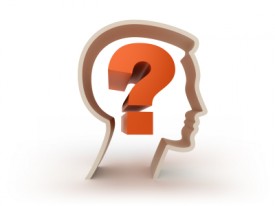
The brain is one of the most mysterious and misunderstood organs in the body. It represents the seat of our judgment, our senses, perceptions and our creativity. More than any other aspect of our anatomy, the uniqueness of our brains is at the core of what makes us truly human.
While neuroscience advances every day, there are a number of myths about the brain that are accepted by many people as fact. As a scientist, I and my colleagues have worked to uncover the brain’s truths. So what are some of these myths – and what are the true stories behind them to the best of our scientific knowledge?
Fiction: We use only a small percentage of our brains.
Fact:General thinking is that we use only about 10% of our brains. Nothing could be further from the truth. Brain scans such as MRI and PET scans show that we regularly use all parts of our brains. Certainly, different areas of the brain are activated during different types of tasks, and some parts of the brain are less critical to support vital functions than others. But as even small brain injuries can show, everypart of the brain performs essential functions in how we process, communicate with, and move through the world around us. Read more at http://www.scientificamerican.com/article.cfm?id=do-we-really-use-only-10.
Fiction: The wrinkles on the surface of the brain appear and become more pronounced as we learn.
Fact:The ridges and crannies – more correctly, the gyri and sulci – on the surface of the brain actually all appear by the time a fetus is 40 weeks old. As the human brain evolved, gyri and sulci appeared as a result of the brain having to fold in upon itself as it grew larger to fit inside a correctly proportioned skull. While the gyri and sulci do not change as we learn, the brain itself – as we know from research in brain plasticity -- doescontinue to change throughout our lives.
Fiction: Brain damage is permanent.
This is an interesting myth, in that it is the result of ambiguous language. The brain is made up of a collection of neurons – brain cells – that are all networked together. When the brain suffers trauma and neurons are destroyed or damaged, those neurons cannot regenerate. In that sense, the damage to them is permanent. That said, those neurons are linked together at synapsesto form complete networks. While a single neuron cannot be repaired, the pathways and connections throughout the brain can rewire themselves and form new pathways. If a connection is lost due to injury, we can reestablish that connection if the damage is not so acute that the entire network cannot be rewired. For a scholarly treatment of how the brain recovers from injury, see http://web.uvic.ca/~skelton/Teaching/General%20Readings/Robertson%20Murre%201999.pdf.
Fiction: A person is either “left-brained” or “right-brained.”
The theory goes that left-brained people are more logical and right-brained people are more creative. Certainly there are asymmetries associated with locations of certain brain functions. For example, mathematical computation and the grammar and vocabulary aspects of language seem to be controlled in most people in the left brain, while numerical approximation and comparison, along with interpretive aspects of language like prosody and intonation, appear to be controlled in the right. These ideas date back to original research done in 1861 by French physician Pierre Paul Broca. Today, through MRI and PET imaging techniques, we have a much more complex view of the way the brain’s hemispheres control functions and interact with one another. The two perform a complex dance of information exchange that gives rise to our abilities. For a look at results of some of these MRI tests in children, see http://www.ncbi.nlm.nih.gov/pubmed/8780075.
Fiction: There are five senses: sight, smell, hearing, taste and touch.
These five are simply the ones that we are most aware of in our conscious minds, but we perceive and sense the world in a great many other ways. For example, “proprioconception” describes how our bodies are oriented in the world. “Nociception” is how we perceive pain. We sense changes in temperature. We sense balance. We feel thirst and hunger. We sense the passage of time. For a quick and easy description of the senses – in humans as well as other species – see http://en.wikipedia.org/wiki/Sense.
As scientists continue our search for the facts, there is much we don’t know; we are expanding our knowledge of the brain’s truths every day. As new discoveries are made, it is natural for facts to become distorted and reinterpreted with each new telling. As educators and scientists, we should take the time to explain the truths about the brain and rectify any misunderstandings we may hear others repeat. The brain is amazing, and communicating the truths about it will further society’s understanding as a whole.
Related Reading:

